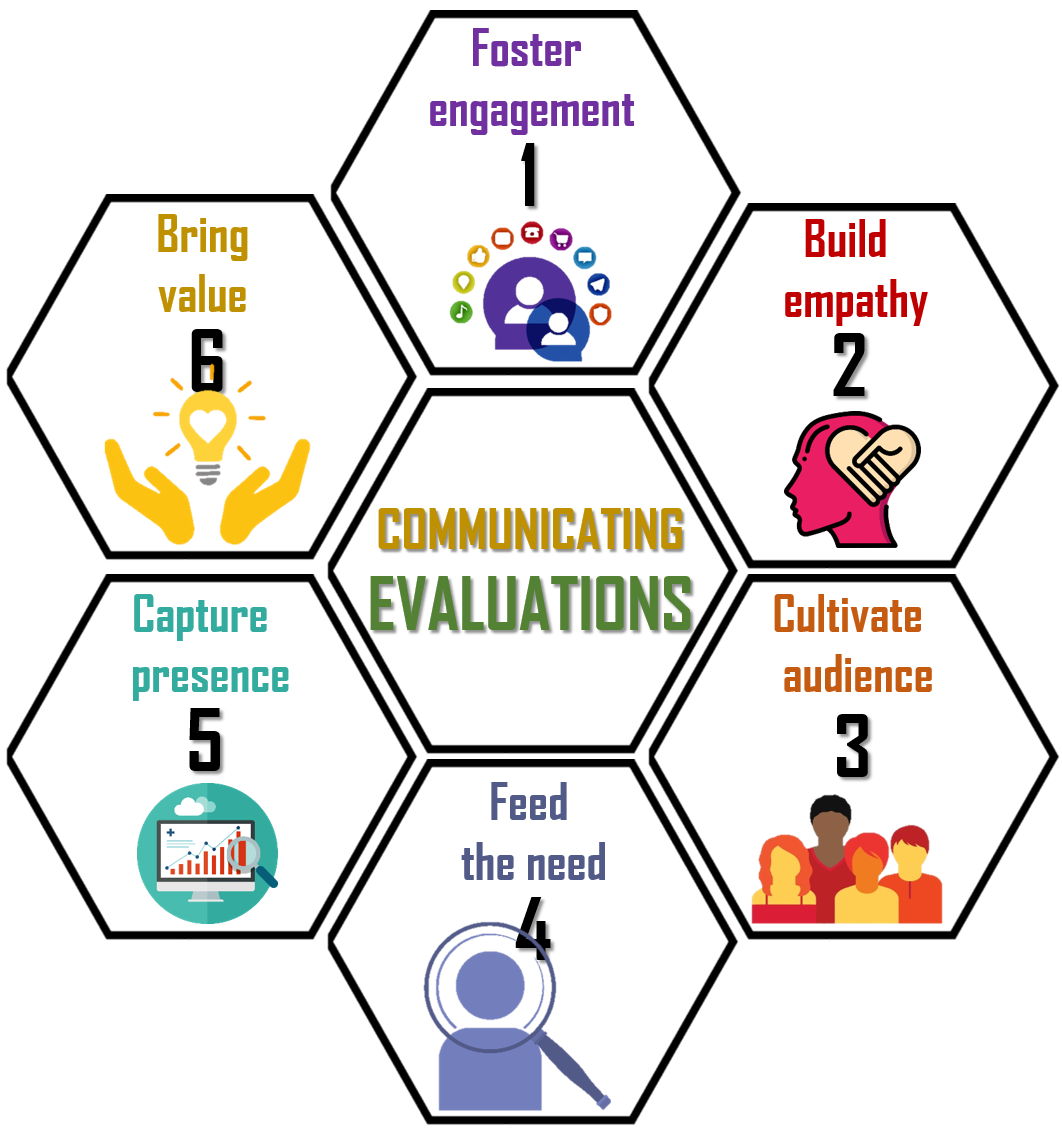Behind the glossy cover: six reflections on communicating evaluations - IOE
Have you ever noticed that beneficiaries always tend to be smiling on the front cover of development reports? I sometimes wonder how realistic this is. From a communications perspective, it certainly paints a nice picture. Is it the right one, though? I guess the answer depends largely on the report’s target audience – or, otherwise stated, on its intended purpose. The intended purpose of an evaluation report is usually very clear, insofar as it stems from the principles that guide the organization’s evaluation processes. In the case of IFAD, for instance, the guiding principles of the Independent Office of Evaluation (IOE) are “accountability, learning, independence and partnership”. Yes, that’s right, “accountability and independence”: two words that raise alarm bells and normally drive people into hiding. So where exactly does this leave communications? In a bit of a conundrum, to be quite honest.
When compared to the commonplace tools used to promote most development reports, the communication approaches necessary to enhance visibility, reach and consumption of evaluation findings present a somewhat distinctive set of opportunities and challenges. It’s a whole different ball game. The unfortunate misconception of evaluators being a quasi-police service, who descend upon recalcitrant project staff from the safe haven of their ivory towers, where they spend most of their time blissfully unaware of the hardship of field operations, does not bode terribly well for the acceptance of their work – let alone for its visibility. And it gets worse. The need for evaluation offices to hold their organizations accountable, risks placing corporate and evaluation communication teams at loggerheads.
I must admit that this is a somewhat gloomy scenario. Is it exaggerated? Maybe. Is it inevitable? Certainly not. I recently carried out an in-depth assessment of IOE’s communication endeavours. The exercise draws inspiration from the best practices of the world’s leading multilateral development financial institutions, and builds on the generous insights of communications and knowledge management specialists from evaluation offices of international development banks, United Nations programmes and funds, and academia. After spending a decent amount of time dissecting findings, triangulating data and analysing trends, I decided to take a step back, and reflect on the underlying essence of what I had captured. What emerged were the following six reflections on how to address the recurring challenges inherent in communicating evaluations.
- Foster engagement – Maximize opportunities for stakeholders to interact with evaluation offices in a proactive way: stakeholder dialogue does not end with an evaluation report.
The first thing I noticed is that communication products should show how offices reach out to their stakeholders in an open and welcoming fashion, and make them feel empowered by seeking their inputs even after an evaluation is completed. This means that communication products need to open the door for an on-going, open and engaged discourse with stakeholders to ensure that they continue to feel connected with the office beyond the end of an evaluation process.
- Build empathy – Create a personal connection, a sense of empathy between evaluation offices and stakeholders: less corporate image, more personal brand.
I also found that evaluation offices need to show that there are real people behind the logo, people that care, people that have at heart the organization, its staff and the beneficiaries that it serves. This requires evaluation offices to be ‘liked’ by their stakeholders, thus overcoming their perceived investigative role, role that triggers in users a (tacit) desire to distance themselves from their work.
- Cultivate audience – Map stakeholders, maximize their breadth, depth and variety, and identify priority clients.
My findings also suggest that evaluation offices should ensure that the reach of their products moves well beyond the closed circle of evaluation specialists and technical experts, to embrace much broader horizons. This means that evaluation offices should not only broaden their communication stakeholder base but also – prior to doing so – understand whom their stakeholders are, and determine how to group and classify them.
- Feed the need – The right message for the right audience through the right product.
What also emerged was the importance of connecting stakeholders with messages and communication products. Evaluation offices should first understand the type of information that their different stakeholders need. Second, they should find the right way to tailor content to match those needs; and third, they should identify the most appropriate vehicle to convey tailored content to selected target audiences. This also means ensuring a ‘reactive-proactive communication balance’. This balance should respond to user interests and needs (reactive), while gradually modifying user consumption trends (proactive), with a view to securing closer synergies between consumption preferences and communication products.
- Capture presence – Be seen as credible, reputable, authoritative and respectable. Be seen as present.
Evaluation offices should show their stakeholders that the lessons, recommendations and messages from its evaluation reports generate interest and engagement among a variety of different audiences, thus fostering an appreciation of the scope of the evaluation function, and underscoring their crucial role in implementing said function.
- Bring value – Safeguard credibility; create opportunities for change.
My final reflection is that focusing only on the good stuff is just not good enough. Offices should foster opportunities for critical reflection and dialogue among a variety of stakeholders and stakeholder groups through their communication products, in order to play a prominent role in the global development discourse. This means giving due visibility to both challenges and opportunities for improvement by leveraging intellectual independence – which is wherein the value added lies.

|
Far from presuming to be universally valid guiding principles, these are mere points for reflection, food-for-thought that underscores the need for a strategic approach to communicating evaluations. For if it is true, as it is, that evaluation offices are uniquely positioned to foster critical reflection and dialogue among a variety of stakeholders, it is by embracing a strategic approach to communications that they are able to broker honest conversations for change – conversations that tackle opportunities for growth, and thus give strength and credibility to future organizational successes.
|


